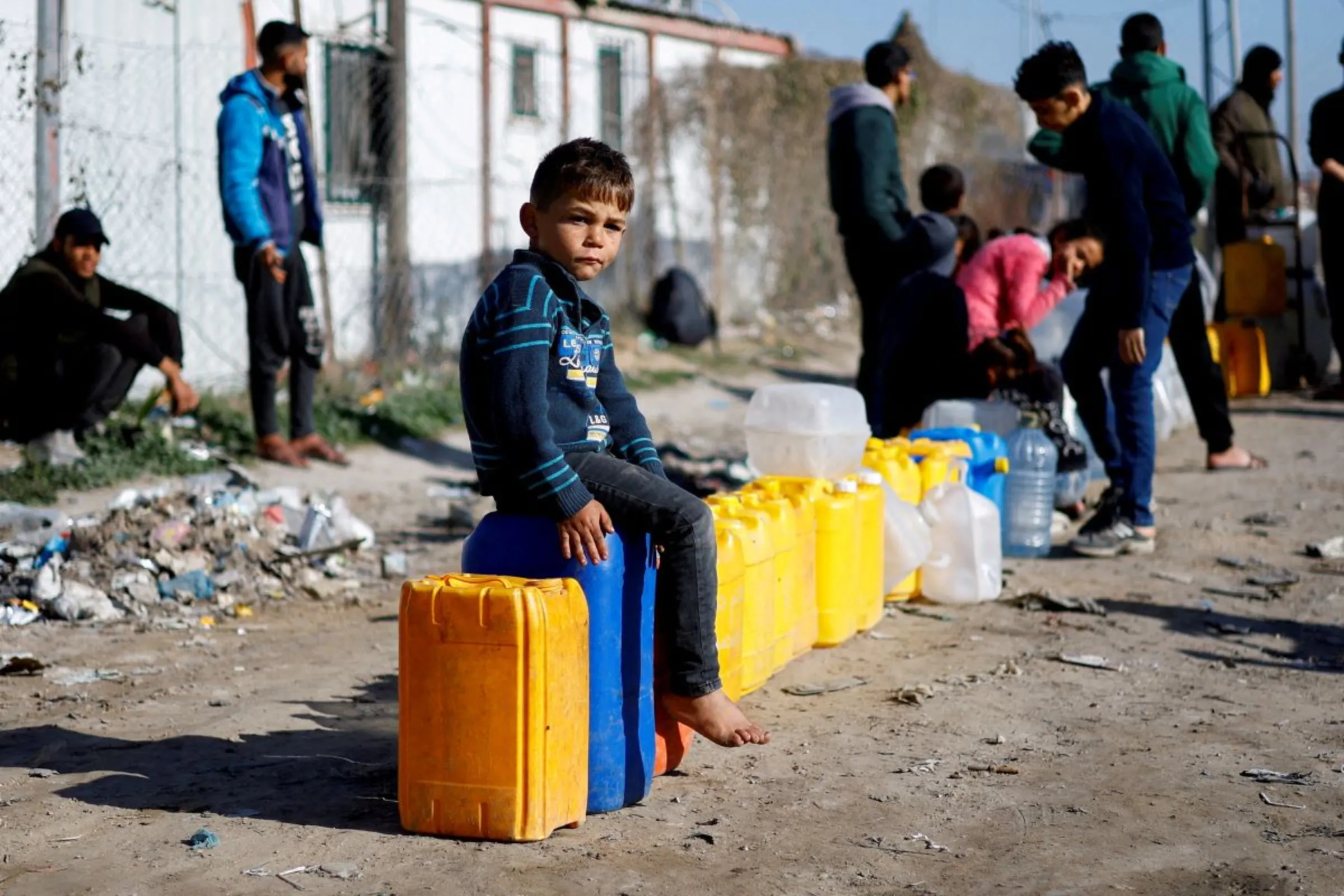Why is funding for humanitarian aid declining?

A displaced Palestinian boy, who fled his house due to Israeli strikes, sits on a water canister at a tent camp, amid the ongoing conflict between Israel and the Palestinian Islamist group Hamas, in Rafah in the southern Gaza Strip, January 18, 2024. REUTERS/Ibraheem Abu Mustafa
What’s the context?
Funding for humanitarian aid continues on a downward trend as 2024 saw another major shortfall in donations
- Less than half of funds raised for 2024
- Middle East needs increase due to Gaza war
- Food aid, support for women face greatest shortfalls
LONDON – Global humanitarian aid continued to decline in 2024 with a funding shortfall stuck at a record high as new and existing conflicts and multiplying climate disasters left more than 320 million people in need of aid.
In 2024, $21.2 billion was raised to help dedicated country programmes, according to the U.N. Office for the Coordination of Humanitarian Affairs (OCHA) figures.
During the year, financial needs grew from a projected $46.4 billion to $49.6 billion due to escalating conflicts in Gaza and Lebanon, meaning that as of November only 43% of the funds had been raised.
This is a slight drop from 2023, when 45% of the funding target was met - the first year that funding fell below 50% of the target in more than a decade.
The dramatic shortfall in 2023 prompted the U.N. to target fewer people in 2024, aiming to reach 197 million out of 323 million people requiring assistance.
As of November, only 116 million people had received assistance.
So why is humanitarian funding in decline and what sectors are most in need?
How much is the global aid bill?
This year, the U.N. wants donors to provide $47.4 billion to enable it to deliver aid across the world.
The appeal is the fourth largest in OCHA's history, but aid chief Tom Fletcher said it still means some 115 million people will not receive the aid they need because the agency simply does not have the resources.
The Middle East and North Africa have overtaken sub-Saharan Africa as the region requiring the most financial aid because of conflict in Gaza and the occupied West Bank, and in Lebanon.
The biggest share - some $15.9 billion - is earmarked for this region, followed by $12 billion for eastern and southern Africa.
Addressing food insecurity will be a priority, according to OCHA, as hunger is set to intensify and worsen into 2025.
The World Food Programme (WFP) projects that it will need $16.9 billion to respond to food shortages in conflict zones and during climate disasters, and to tackle malnutrition.
Separately, the U.N. children's agency UNICEF has appealed for $9.9 billion to fund hygiene, food, education and health programmes for 109 million children, calling 2024 one of the "worst years" for children affected by conflict.
Why is the aid gap growing?
2024 was yet another brutal year for the world's most vulnerable with violence intensifying in the Middle East while multiplying floods, drought and extreme heat wreaked havoc across the world.
Crises are lasting for longer, with the average humanitarian response plan covering 10 years, according to OCHA. In some African nations and in the Palestinian territories, humanitarian appeals have been active for more than two decades.
Prolonged crises also have knock-on effects in neighbouring countries. For example, famine and violence in Sudan have caused a dramatic rise in aid needs in Chad as refugees spill over the border.
At the same time, some wealthy donor countries have cut aid spending.
Germany, one of the U.N.'s largest donors, slashed its aid budget by $500 million from 2023 to 2024, and has proposed cutting a further $1 billion in 2025.
Britain's new Labour government has also failed to increase its Official Development Assistance to the international target of 0.7% of gross national income (GNI) after the previous Conservative government reduced it to 0.5%.
Major relief agencies are also concerned that U.S. President-elect Donald Trump could slash funding once he returns to office on Jan. 20, after attempts to make cuts during his previous term as president were blocked by Congress.
Where are the biggest shortfalls?
Underfunding to the WFP forced the organisation to cut back programmes in 2024.
Shortfalls in Chad and Haiti worsened food insecurity while cuts were made to programmes in Afghanistan, Syria and Ethiopia.
Programmes to support women and girls, and tackle gender-based violence continue to be among the most underfunded, and shortfalls in funding for water, sanitation and health care (WASH) services impacted disease response in Africa and in Yemen.
What's in store for the future?
OCHA will continue to channel funds through local aid partners, after a record 45% of assistance was directed through local and national actors in 2024.
It also plans to expand access to cash assistance, which decreased in 2023.
Six climate-related appeals ended in 2024, with another six set to expire in 2025, but OCHA warns that countries will still need investments to help adapt and build resilience against future disasters.
This story was updated on January 7, 2025 to include new data from the U.N. and World Food Programme.
(Reporting by Beatrice Tridimas; Editing by Jonathan Hemming and Clar Ni Chonghaile.)
Context is powered by the Thomson Reuters Foundation Newsroom.
Our Standards: Thomson Reuters Trust Principles
Tags
- Extreme weather
- Government aid
- War and conflict
- Loss and damage

















